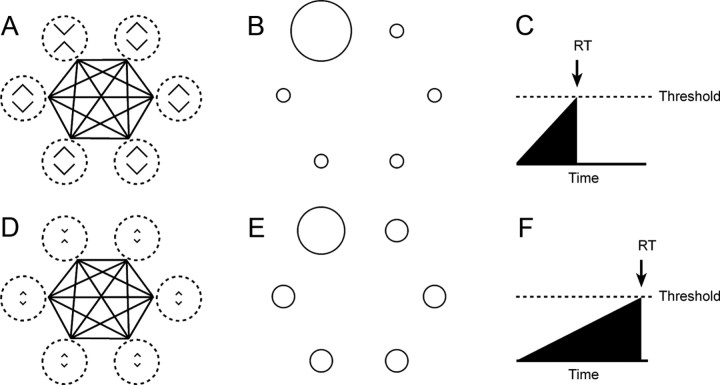Figure 8.
A plausible mechanistic link between the neuronal discrimination signal and visual search reaction time is afforded by a model incorporating contrast-enhancing lateral inhibition. A, The model consists of six units with receptive fields (hatched circles) centered on the locations of the six items in the search array (in this case an X oddball among diamond distractors). The units mutually inhibit each (as indicated by the black lines connecting the receptive fields). B, Responses of the network to the display shown in A on the assumption that the units are X-selective. The unit with the oddball in its field is strongly active because (1) it receives strong bottom-up excitation from the X in its receptive field and (2) the other units, which inhibit it, receive only weak bottom-up excitation from the diamonds in their receptive fields. C, Strong activation from the unit with the oddball in its receptive field, fed to an integrator, causes the output of the integrator to rise rapidly toward a decision threshold with the result that the reaction time (RT) is short. D–F, When the same units are stimulated with a display in which the X and diamonds are less discriminable, the unit with the oddball in its field is less strongly active because the other units, which inhibit it, receive stronger bottom-up excitation from the diamonds in their receptive fields. Consequently, the output of the integrator to rises more slowly toward a decision threshold with the result that the RT is longer.

